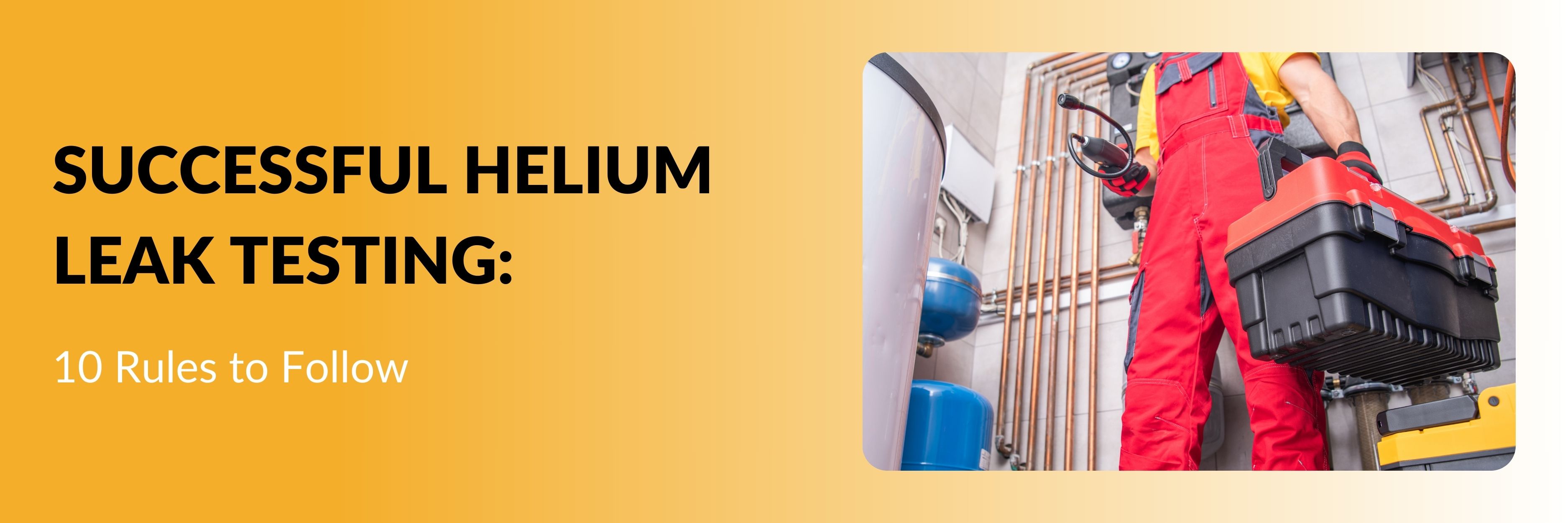
WHY HELIUM?
Helium leak testing using a mass spectrometer leak detector (MSLD) is the most broadly-used leak testing solution—and for a good reason. Helium is inert, non-toxic, non-flammable, non-condensable, and it isn’t typically present in the atmosphere over trace amounts. Since it has a relatively small atomic size, helium can effortlessly pass through leaks. Due to these inherent qualities and its high sensitivity, helium is often a primary choice when it comes to leak testing applications.
Whether you are new to helium leak testing, or are operating a helium leak test process, adherence to key guidelines will help you achieve greater accuracy, faster cycle times, and less downtime. Here are ten important tips you can follow that will support good helium leak testing practice.
10 RULES
- Test pressure conditions should resemble operating conditions of test item—leak tightness of test item may change with pressure conditions.
- Maintain low helium ambient background especially in sniffing mode for increased sensitivity and helium signal to noise ratio.
- Keep test items and test fixture as clean and dry as application allows to increase up-time and overall performance.
- Minimize “dead” volume and surface area for hard vacuum testing to increase performance in all aspects.
- Avoid conductance constraints for hard vacuum testing—it may decrease cycle times and increase sensitivity.
- Optimize helium test concentration to minimize expense—air dilution on test mixture can save on cost.
- Select the best suited mode of operation that meets test criteria—decrease cycle times or enhance helium signal to noise ratio.
- Determine leak rate reality. Don’t specify a limit that is more sensitive than needed, as smaller leak rates decrease production speed and increase cost.
- Optimize pumping package where applicable and understand the tradeoffs of split flow. Bigger is not necessarily better.
- Avoid unplanned downtime by implementing a preventative maintenance program for your helium leak detector.
